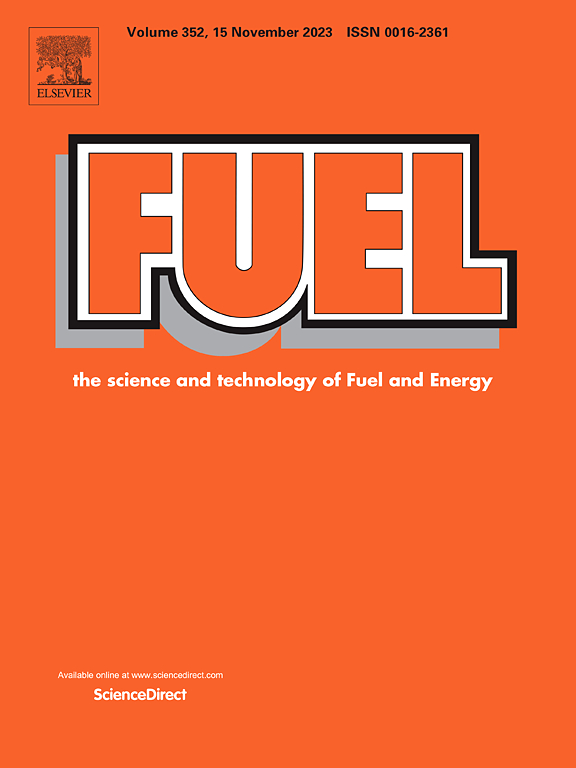Dry reforming of methane over Ni/Al2O3 catalyst derived from partially reduced dendritic layered NiAl2O4
IF 6.7
1区 工程技术
Q2 ENERGY & FUELS
引用次数: 0
Abstract
The Ni/Al2O3 catalysts derived from dendritic layered NiAl2O4 at different reduction temperatures are systematically investigated to understand their dry reforming of methane (DRM) performance and the occurrence of coking and sintering. The characterization results including SEM/TEM/BET show that the dendritic layered morphology can effectively stabilize Ni nanoparticles and catalyst structure, thus ensuring the anti-sintering performance of the catalyst. Meanwhile, the partially reduced NiAl2O4 on the 10Ni-Al2O3-700 (reduction temperature of 700 °C) can form small Ni nanoparticles and defective spinel phase. The imperfect NiAl2O4 spinel has abundant surface oxygen vacancies that can adsorb and activate CO2, supported by the CO2 partial pressure experiment and CO2-TPD result, and this provides a CO2-assisted dissociation pathway with CHxO* as a key intermediate for CH4 conversion. And it will compete with the direct dissociation of CH4 as the main source of coking, thereby reducing the coking on the catalyst. 10Ni-Al2O3-700 has similar DRM performance to 10Ni-Al2O3-800, with CO2 and CH4 conversion of 83.6 % and 71.1 %, at 650 °C, but with much less carbon deposition (25.6 % vs 57.3 %). Meanwhile, the initial DRM activity can be restored by regeneration treatment.

求助全文
约1分钟内获得全文
求助全文
来源期刊

Fuel
工程技术-工程:化工
CiteScore
12.80
自引率
20.30%
发文量
3506
审稿时长
64 days
期刊介绍:
The exploration of energy sources remains a critical matter of study. For the past nine decades, fuel has consistently held the forefront in primary research efforts within the field of energy science. This area of investigation encompasses a wide range of subjects, with a particular emphasis on emerging concerns like environmental factors and pollution.
 求助内容:
求助内容: 应助结果提醒方式:
应助结果提醒方式:


